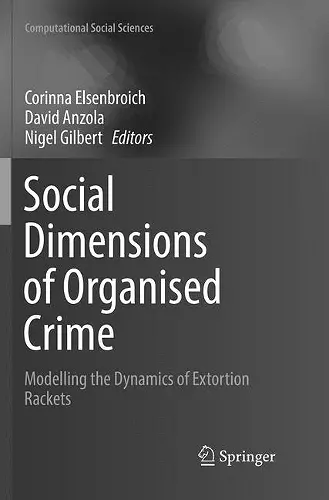Social Dimensions of Organised Crime
Modelling the Dynamics of Extortion Rackets
Nigel Gilbert editor Corinna Elsenbroich editor David Anzola editor
Format:Paperback
Publisher:Springer International Publishing AG
Published:17th Jul '18
Currently unavailable, and unfortunately no date known when it will be back

This book presents a multi-disciplinary investigation into extortion rackets with a particular focus on the structures of criminal organisations and their collapse, societal processes in which extortion rackets strive and fail and the impacts of bottom-up and top-down ways of fighting extortion racketeering. Through integrating a range of disciplines and methods the book provides an extensive case study of empirically based computational social science. It is based on a wealth of qualitative data regarding multiple extortion rackets, such as the Sicilian Mafia, an international money laundering organisation and a predatory extortion case in Germany. Computational methods are used for data analysis, to help in operationalising data for use in agent-based models and to explore structures and dynamics of extortion racketeering through simulations. In addition to textual data sources, stakeholders and experts are extensively involved, providing narratives for analysis and qualitative validation of models. The book presents a systematic application of computational social science methods to the substantive area of extortion racketeering. The reader will gain a deep understanding of extortion rackets, in particular their entrenchment in society and processes supporting and undermining extortion rackets. Also covered are computational social science methods, in particular computationally assisted text analysis and agent-based modelling, and the integration of empirical, theoretical and computational social science.
“This work is one of many in the unfolding field of computational social science that not only analyzes data, but additionally runs simulations and develops databased models to understand current and future environments. As such it is a valuable study not only for the specific subject matter, but also for the potentially broad application of the techniques employed. … This research is a noteworthy contribution to the emerging multidisciplinary and computationally aided social sciences.” (Computing Reviews, October, 2017)
ISBN: 9783319832296
Dimensions: unknown
Weight: 3985g
250 pages
Softcover reprint of the original 1st ed. 2016